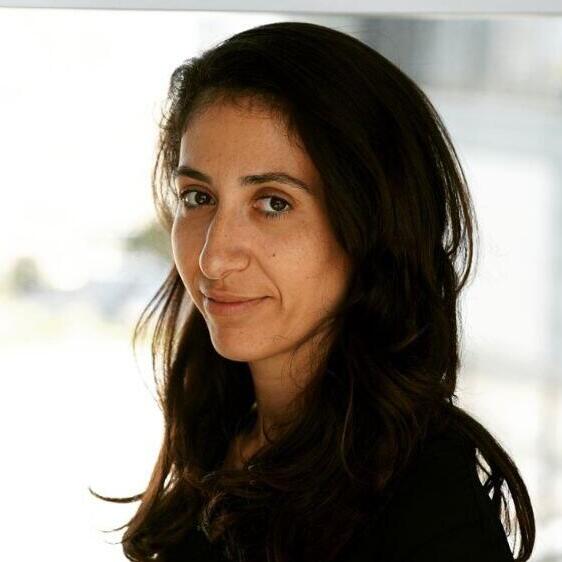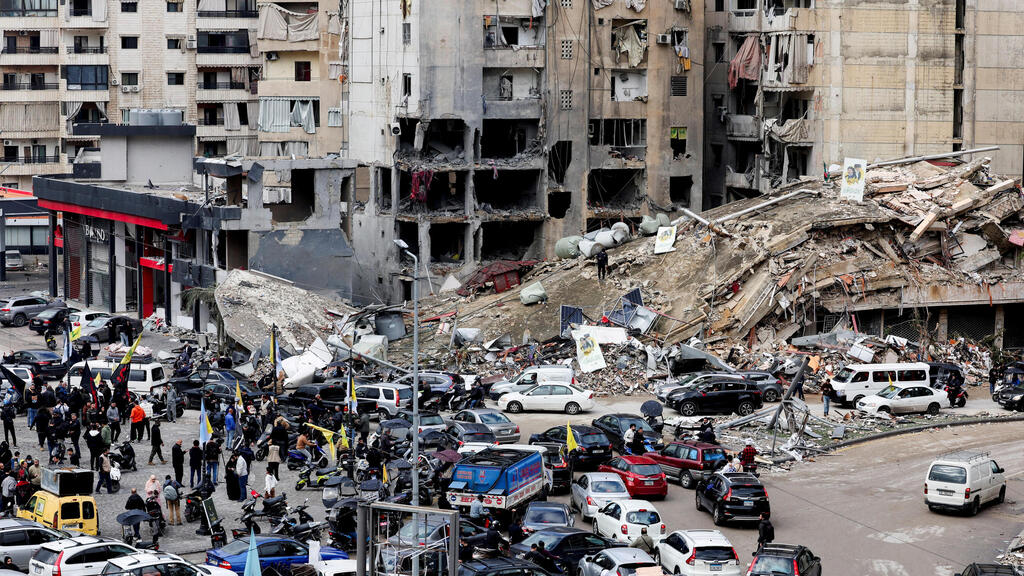Displaced Lebanese citizens returned on Wednesday at the start of the cease-fire to the areas that have come under attack in recent months, accompanied by song, celebrations, signs of support for Hezbollah and shooting in the air - but this was a show planned in advance by the Shiite terrorist organization.
Along with the attempt to convey the joy of the cease-fire and a perceived victory, the Arab media covered the shock of the residents when confronted with the destruction, and realized how difficult it will be to restore their destroyed homes before winter sets in, as well as the lack of an immediate response from Hezbollah, in contrast to what happened at the end of the Second Lebanon War.
Lebanese citizens celebrate cease-fire 'victory' as they return to find their homes
Lebanese civilians celebrate the cease-fire as they return to their homes
(Video: Reuters)
The Saudi newspaper ASharq Al-Awsat reported Wednesday night that, three days before the cease-fire came into effect , Hezbollah began printing posters and flags for distribution in Dahieh and other areas in Lebanon that came under attack. The preparations created a surreal sight of citizens driving around in their cars, waving Lebanese and Hezbollah flags and celebrating "victory" among the ruins of their homes, when some of them have nowhere to return to and need alternative housing for the near future.
The Lebanese National News Agency reported that convoys of vehicles waving Hezbollah flags and bearing pictures of Hezbollah Secretary General Hassan Nasrallah and his alleged successor Hashem Safieddine - who were both killed - arrived in Dahieh Wednesday to celebrate, despite the massive destruction in the neighborhood. The cars honked, the young people sang in the squares and intersections, bulldozers began opening the roads and clearing the ruins - but the signs of sadness were evident on the faces of those whose property was destroyed and also lost their livelihood.
4 View gallery


Residents of Dahieh return at start of cease-fire waving Hezbollah flags
(Photo: Mohamed Azakir/ Reuters )
4 View gallery


A resident of Beirut retrieves some belongings amid the destruction
(Photo: Mohammed Yassin / Reuters)
The traffic congestion that characterizes the area has returned, but the joy recorded in the photos does not reflect reality. The houses of the Dahieh are a pile of rubble, and ASharq Al-Awsat reported that about 450 buildings in the area were destroyed during the months of fighting; But these are unofficial figures, since many other buildings were damaged but not completely destroyed. The Saudi newspaper noted that the buildings that were destroyed did not reach the number destroyed in the Second Lebanon War, which was claimed to be 720, "but the attacks now were carried out over a wider geographical area than in the previous war, so the number of buildings that were damaged is greater."
About two weeks ago, the Al-Akhbar newspaper, which serves as Hezbollah's mouthpiece, provided completely different data. It reported that, in 2006, 246 buildings were destroyed in Dahieh and that by the end of October the number had only reached 220. Also, according to the Qatari Al-Araby channel, 300 houses were destroyed in Dahieh.
4 View gallery


Returning residents celebrating cease-fire 'victory' wave photos of slain Hezbollah leader Hassan Nasrallah
(Photo: Bilal Hussein/AP)
ASharq Al-Awsat emphasized that there is hardly a street in the district in the south of Beirut that is not destroyed. On every street corner you can see the remains of the attacks and smell the smell of fire. Abed, a young Syrian who works as a security guard in one of the buildings in Dahieh, spoke to the newspaper when he came to collect his belongings from his apartment located in one of the buildings that were attacked. Three floors of his building were damaged and, according to the engineers who came to inspect the damage, it seems that it will not be possible to restore the building.
Muhammad Hashem, also a resident of Dahieh, told the Saudi newspaper that his house was severely damaged by an attack aimed at a nearby building. "When we see the misfortune of our neighbors, our misfortune seems easier. But in any case, we won't be able to live in the house in the near future, because the stairs of the building were damaged and inside the house there are no windows or glass that can be closed, and winter began with a record drop in temperatures," he said.
In contrast to what happened at the end of the Second Lebanon War, the newspaper noted, then Hezbollah rushed to examine the damages and pay compensation to the victims, today no one has yet made contact with the displaced. Thus, yesterday's celebrations were also accompanied by criticism. Many fled for fear of stray bullets from the "joy shooting," and a young man on a motorcycle even cursed the shooters: "We survived Israel's missiles and they want to kill us with their stupid bullets."
360 targets were attacked in Da'ahia, more than 12,000 in all of Lebanon
IDF spokesman, Lt. Col. Daniel Hagari, presented on Wednesday night, less than a day after the cease-fire, data on the attacks in Lebanon throughout the 14 months of fighting. In Dahieh, according to the data, the IDF attacked about 360 targets. Hagari noted that among the targets that were attacked were "terrorist headquarters and workshops for the production of weapons. The IDF's fighting in Lebanon was powerful, planned and included tricks and daring operations, some of which were secret that we have not yet revealed, all with the aim of creating security for the residents of the north."
Get the Ynetnews app on your smartphone: Google Play: https://bit.ly/4eJ37pE | Apple App Store: https://bit.ly/3ZL7iNv
"This morning, the cease-fire agreement in Lebanon entered into force, as approved by the Prime Minister, the Defense Minister and the Cabinet," Hagari said on Wednesday. "IDF forces are still occupying positions in southern Lebanon, in the villages and areas from which there will be a gradual withdrawal in accordance with the agreement. The Air Force planes continue to fly in the skies of Lebanon, they are gathering intelligence and are prepared to act where necessary. In the coming weeks, we will reshape the area of defense and security. We will apply the lessons from the past." .
Hagar revealed documentation of a missile manufacturing site that was attacked before the cease-fire. "During the night, before the agreement entered into force, we attacked about 180 targets throughout Lebanon. One of them is a central missile production site near the Syrian border, which we have been monitoring for a long time. This is a strategic asset of Hezbollah. Near the site, we attacked a Radwan camp, where the unit's operatives were staying and training, the purpose of which was the implementation of the 'Occupation of the Galilee' plan," he said.






